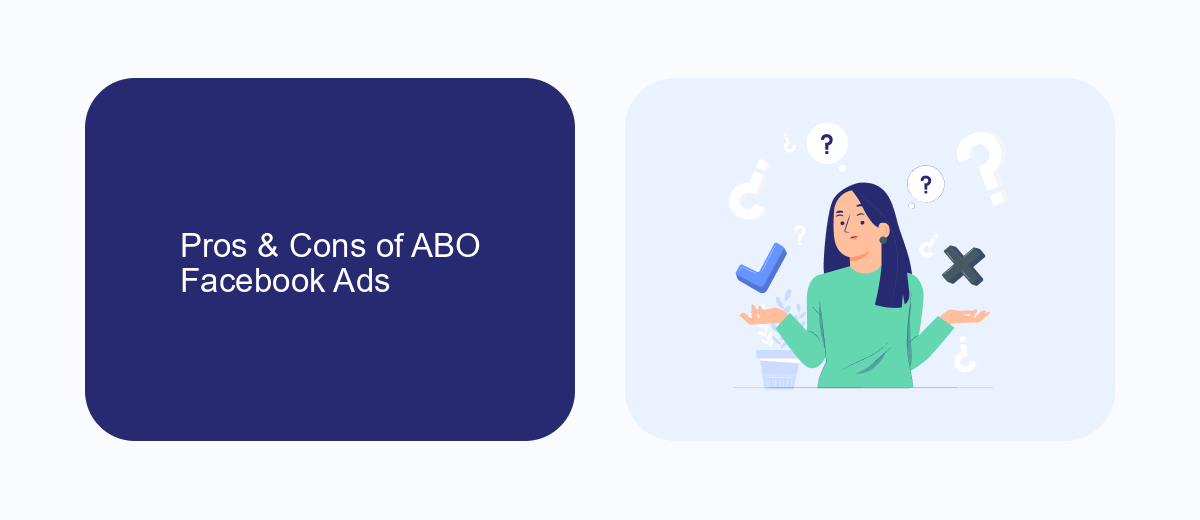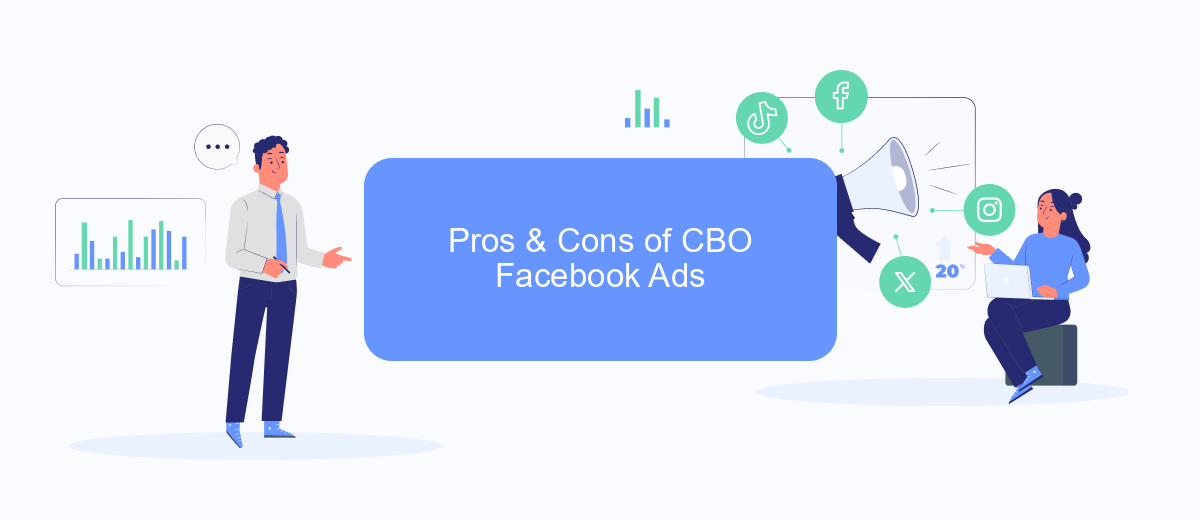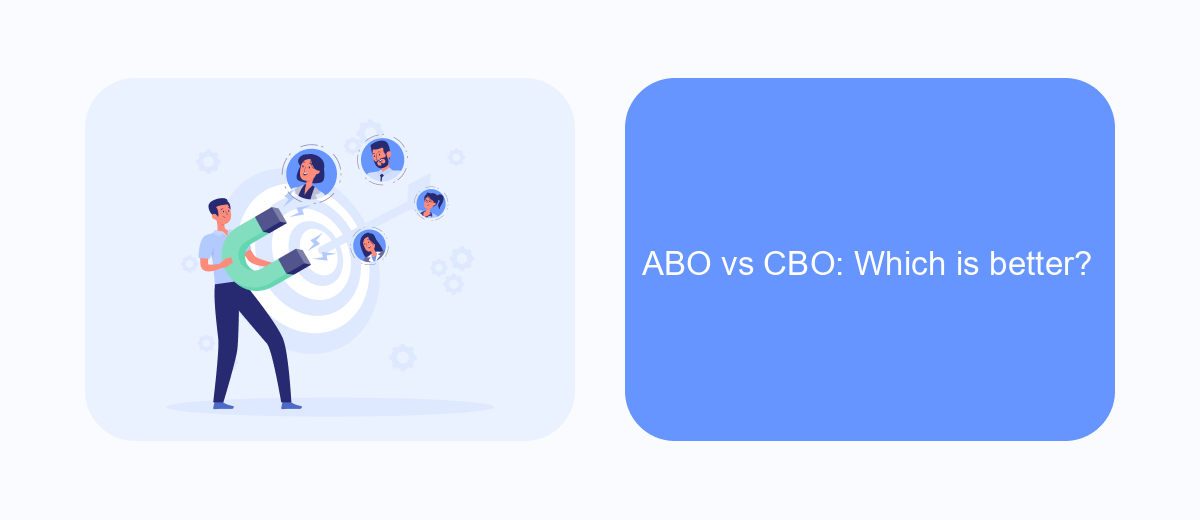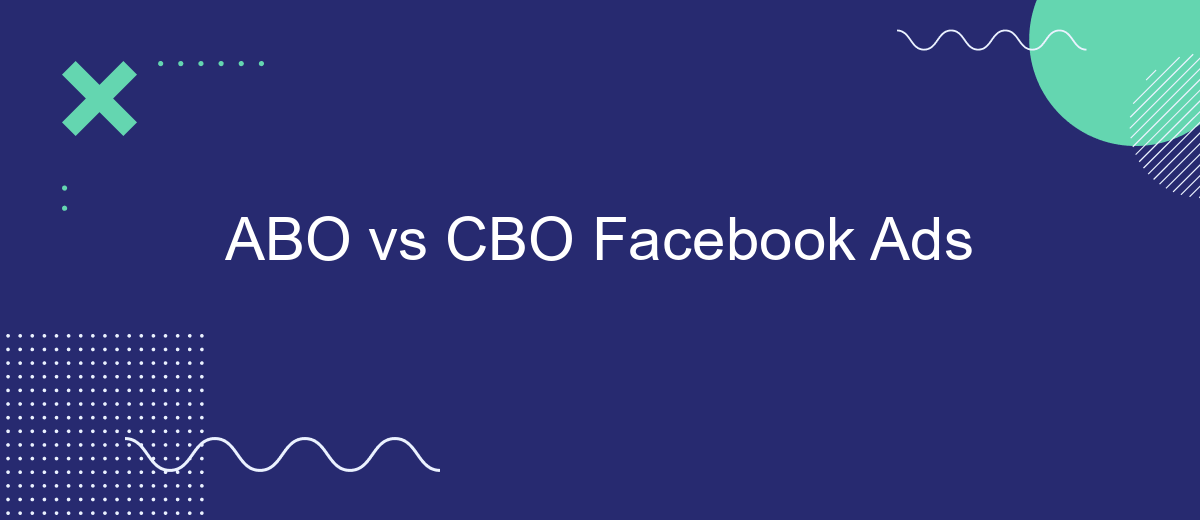In the ever-evolving landscape of digital marketing, understanding the nuances of Facebook Ads is crucial for optimizing campaign performance. Two popular strategies, Ad Set Budget Optimization (ABO) and Campaign Budget Optimization (CBO), offer distinct approaches to budget allocation. This article explores the key differences between ABO and CBO, helping marketers make informed decisions to maximize their advertising effectiveness and achieve their business goals.
ABO vs CBO: Facebook Ads Explained
When it comes to Facebook Ads, understanding the difference between ABO (Ad Set Budget Optimization) and CBO (Campaign Budget Optimization) is crucial for optimizing your advertising strategy. ABO allows advertisers to set individual budgets for each ad set, offering more control over budget allocation. This approach is beneficial for testing different audiences or creatives, as you can allocate resources based on performance at the ad set level.
- ABO: Individual budgets for each ad set.
- CBO: Centralized budget at the campaign level.
- ABO: Greater control over ad set performance.
- CBO: Facebook optimizes budget distribution across ad sets.
On the other hand, CBO centralizes the budget at the campaign level, allowing Facebook's algorithm to automatically distribute the budget across ad sets based on performance. This can lead to more efficient use of your budget, especially when you have multiple ad sets with varying performance. Choosing between ABO and CBO depends on your campaign goals and the level of control you wish to maintain over budget distribution.
Pros & Cons of ABO Facebook Ads

ABO (Ad Set Budget Optimization) Facebook Ads offer advertisers greater control over budget allocation at the ad set level. This granular control allows marketers to allocate more budget to high-performing ad sets, optimizing the return on investment. For businesses with specific audience segments and varied campaign goals, ABO provides the flexibility to tailor spending according to each ad set's performance. Additionally, ABO can be advantageous for testing different audiences or creatives, as it enables precise budget adjustments based on real-time data. This level of control can be particularly beneficial for campaigns with distinct objectives or when targeting niche markets.
However, the downside of using ABO is that it requires more manual oversight and management. Unlike CBO (Campaign Budget Optimization), which automatically allocates budget across ad sets based on performance, ABO demands constant monitoring to ensure optimal budget distribution. This can be time-consuming and may lead to inefficiencies if not managed properly. Furthermore, advertisers might miss out on potential performance improvements that CBO's algorithmic optimization could provide. To streamline the process and enhance efficiency, businesses can leverage tools like SaveMyLeads to automate integrations and simplify data management, allowing marketers to focus more on strategy and less on manual adjustments.
Pros & Cons of CBO Facebook Ads

Campaign Budget Optimization (CBO) in Facebook Ads offers a streamlined approach to managing advertising budgets. By allowing Facebook's algorithms to allocate budget across ad sets, CBO can enhance efficiency and performance. However, like any tool, it comes with its own set of advantages and disadvantages.
- Pros:
- Efficiency: CBO automatically distributes budget to top-performing ad sets, saving time and effort.
- Scalability: Ideal for scaling campaigns, as it adjusts budget allocation dynamically based on performance.
- Data-Driven: Utilizes Facebook's algorithm to make informed decisions, potentially leading to better results.
- Cons:
- Less Control: Advertisers have limited control over budget distribution across ad sets.
- Learning Curve: Requires understanding of Facebook's algorithm to optimize effectively.
- Variable Performance: Results may vary, especially for niche markets or smaller budgets.
In conclusion, while CBO can significantly enhance campaign management and performance, it requires a strategic approach to maximize its benefits. Understanding its limitations and strengths is crucial for advertisers aiming to leverage its full potential.
ABO vs CBO: Which is better?

When it comes to Facebook Ads, choosing between Ad Set Budget Optimization (ABO) and Campaign Budget Optimization (CBO) can significantly impact your advertising strategy. ABO allows advertisers to set individual budgets for each ad set, giving more granular control over spending. This method is beneficial for campaigns that require precise budget allocation across different target audiences or creative variations.
On the other hand, CBO centralizes the budget at the campaign level, allowing Facebook's algorithm to distribute funds across ad sets based on performance. This approach can be advantageous for advertisers looking to maximize efficiency and results without manual adjustments. CBO is particularly effective for campaigns with multiple ad sets where performance can vary significantly.
- ABO offers more control over individual ad set budgets.
- CBO optimizes budget distribution automatically based on ad performance.
- ABO is ideal for testing different audiences or creatives.
- CBO is suitable for campaigns aiming for maximum efficiency.
Ultimately, the choice between ABO and CBO depends on your campaign goals and management style. If you prefer detailed control and testing, ABO might be the better option. However, if you seek streamlined budget management and optimization, CBO could provide superior results. Consider experimenting with both to determine which method aligns best with your advertising objectives.
SaveMyLeads for ABO and CBO
SaveMyLeads offers a seamless solution for managing both ABO (Ad Set Budget Optimization) and CBO (Campaign Budget Optimization) strategies within Facebook Ads. By automating the integration process, SaveMyLeads ensures that marketers can effortlessly transfer lead data from Facebook Ads to various CRM systems, email marketing platforms, and other applications. This automation not only saves time but also minimizes the risk of manual errors, allowing businesses to focus on optimizing their advertising strategies and maximizing ROI.
Whether you're employing ABO to have more granular control over individual ad set budgets or leveraging CBO for a more automated approach to budget allocation across campaigns, SaveMyLeads provides the flexibility and efficiency needed to streamline your workflow. The platform's user-friendly interface and robust integration capabilities make it an ideal choice for businesses looking to enhance their Facebook Ads management. By connecting your ad campaigns with SaveMyLeads, you ensure that your marketing efforts are well-coordinated and data-driven, leading to more effective audience targeting and improved campaign performance.
FAQ
What is the main difference between ABO and CBO in Facebook Ads?
When should I use ABO instead of CBO?
How does CBO optimize budget allocation?
Can I switch from ABO to CBO during a campaign?
How can I automate and integrate my Facebook Ads data with other tools?
You probably know that the speed of leads processing directly affects the conversion and customer loyalty. Do you want to receive real-time information about new orders from Facebook and Instagram in order to respond to them as quickly as possible? Use the SaveMyLeads online connector. Link your Facebook advertising account to the messenger so that employees receive notifications about new leads. Create an integration with the SMS service so that a welcome message is sent to each new customer. Adding leads to a CRM system, contacts to mailing lists, tasks to project management programs – all this and much more can be automated using SaveMyLeads. Set up integrations, get rid of routine operations and focus on the really important tasks.
